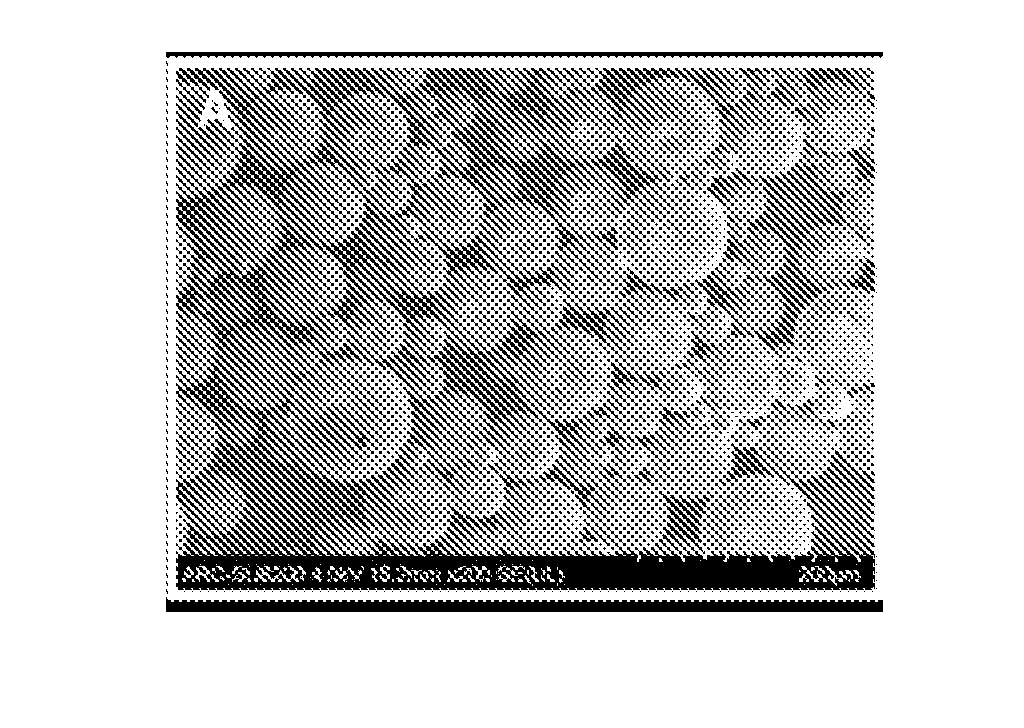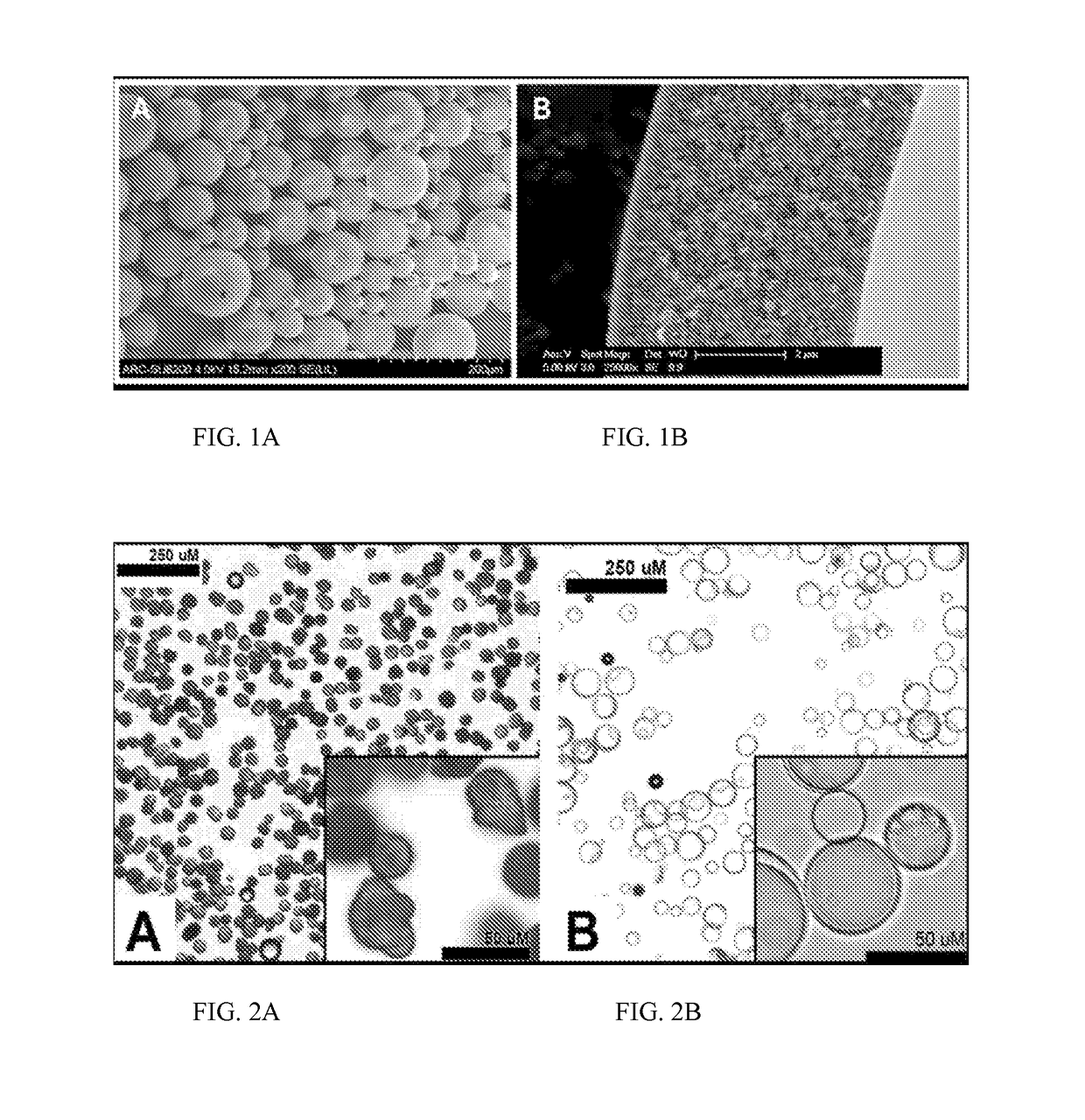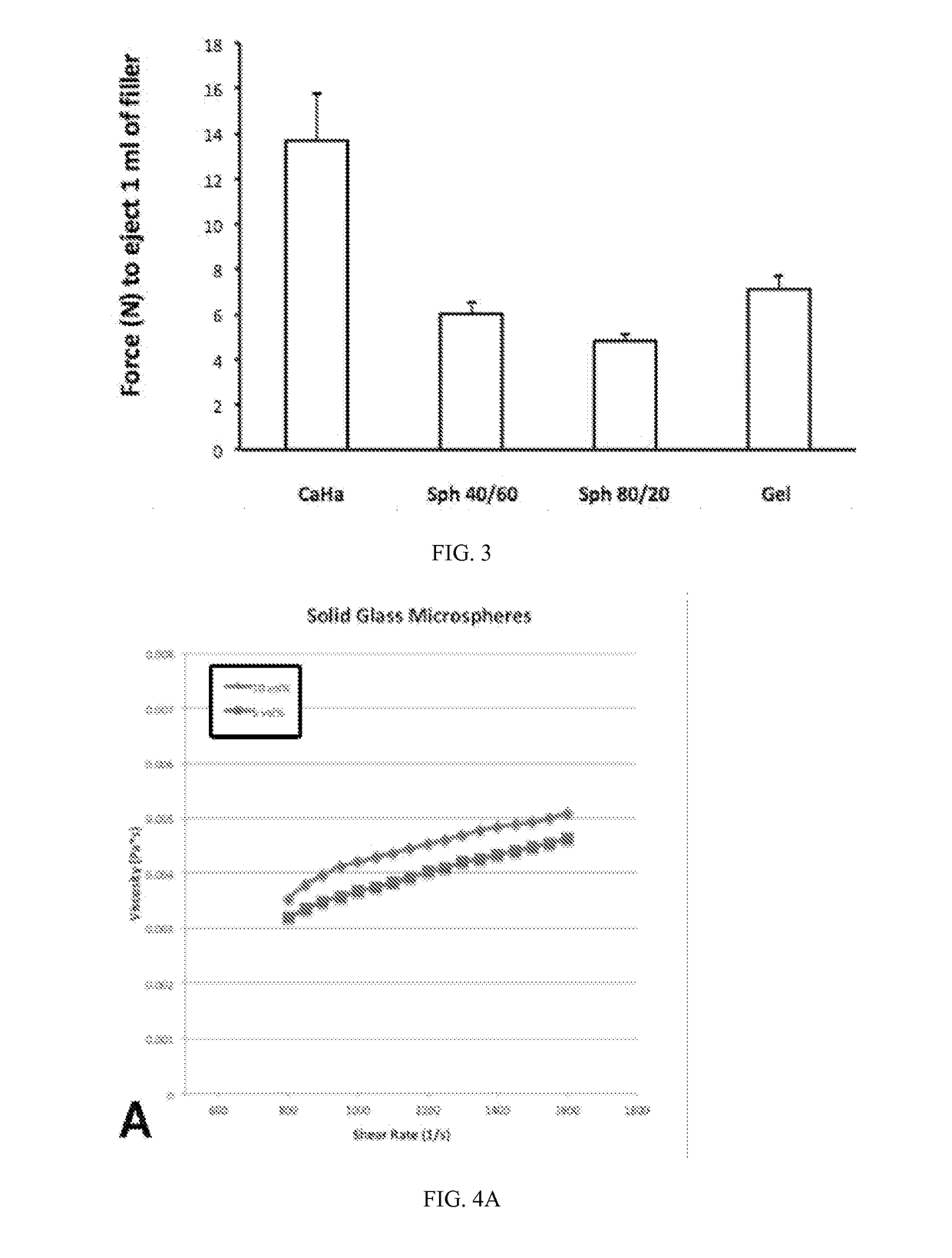Glass Composites for Tissue Augmentation, Biomedical and Cosmetic Applications
a composite material and tissue technology, applied in the field of implants and kits, can solve the problems of difficult passage of thin needles used in clinical applications, less than ideal for cosmetic or surgical procedures, etc., and achieve the effect of controlling and reducing viscosity
- Summary
- Abstract
- Description
- Claims
- Application Information
AI Technical Summary
Benefits of technology
Problems solved by technology
Method used
Image
Examples
example 1
ization of Microsphere Compositions
[0205]Preparations of a commercially available dermal filler containing calcium hydroxyappetite particles and methylhydroxycellulose gel were made by applying a small amount onto a glass slide along with a volume of aqueous mounting media and a coverslip. A similar preparation was made of one disclosed composite, namely hollow wall glass microspheres of a mixture of sizes and uncoated, combined with a methylhydroxycellulose matrix. Slides were visualized at high magnification using a combination of phase contrast and brightfield microscopy, to explore the surface properties of the two fillers.
[0206]The commercially available filler is described as containing calcium hydroxyappetite “microspheres” (quotation marks added), however as can be seen in the micrographs of FIG. 2, the particles are irregular and aspherical in shape and have a rough outer surface (FIG. 2A), compared to the smooth and spherical glass microspheres (FIG. 2B).
[0207]Next, dermal...
example 2
of Microsphere Compositions
[0210]To further explore the viscosity properties of several example formulations of the disclosed composite, composites were prepared (given in Table 2) containing solid glass microspheres, hollow glass microspheres and porous wall hollow glass microspheres combined with various aqueous and biocompatible matrices. These composites were then analyzed to determine viscosity as a function of shear rate using a Discovery Hybrid Rheometer (TA Instruments; New Castle, Del.) using multiple shear ramping from 800 to 1600 l / s, at 37 C.
TABLE 2MicrosphereType of% VolMatrixDesignationSize RangeMicrosphereMicrospheresCompositionA25-35 uMSolid 5%AqueousB25-35 uMSolid10%AqueousC25-35 uMHollow 5%AqueousD25-35 uMHollow10%AqueousE25-35 uMHollow20%Aqueous
Example results are given for testing of these composites in order to measure viscosity of various combinations of microsphere types, sizes and size distributions, and ratios of the microspheres to matrix. By varying these ...
example 3
re Compositions Slowly Release Cargo
[0211]The glass microsphere portion of the composite can be optimized using various coatings. It was first discovered that porous wall hollow glass microspheres could be coated with the polymer Poly-2 Vinyl Pyridine (P-2VP—FIG. 5A), which has been used safely in biomedical applications. By way of further example, it was also demonstrated that the microspheres could be coated with polyhedral oligomeric silsesquioxane (POSS—FIG. 5B), and various nanomaterials, in this example quantum dot (QDot) nano-particles (FIG. 5C, FIG. 5D). The coatings (for example, Qdots, FIG. 5D) can entrap cargo within the microspheres.
[0212]P-2VP can also entrap small molecules, compounds, and biological molecules within the microspheres. By way of example, it was demonstrated that P-2VP can entrap fluorescent molecules as well as osteogenic cytokines, like Stromal Derived Factor-1 (SDF-1), to allow delayed or extended release over time. P-2VP is an organic polymer that is...
PUM
| Property | Measurement | Unit |
|---|---|---|
| Diameter | aaaaa | aaaaa |
| Diameter | aaaaa | aaaaa |
| Viscosity | aaaaa | aaaaa |
Abstract
Description
Claims
Application Information
 Login to View More
Login to View More - R&D
- Intellectual Property
- Life Sciences
- Materials
- Tech Scout
- Unparalleled Data Quality
- Higher Quality Content
- 60% Fewer Hallucinations
Browse by: Latest US Patents, China's latest patents, Technical Efficacy Thesaurus, Application Domain, Technology Topic, Popular Technical Reports.
© 2025 PatSnap. All rights reserved.Legal|Privacy policy|Modern Slavery Act Transparency Statement|Sitemap|About US| Contact US: help@patsnap.com



